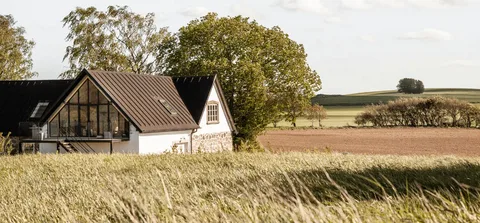Ever wondered why certain novels stick with you long after you’ve finished them?
For many, it’s the setting—a place so vivid it almost becomes a character itself.
When it comes to classic novels set in Nebraska, readers often turn to O Pioneers! by Willa Cather. This timeless work, frequently mentioned in The New York Times (“NYT”), paints Nebraska’s sweeping prairies in all their beauty and hardship.
But why does Classic Novel Set in Nebraska this resonate so deeply?
Why do we keep coming back to this novel and others like it?
Let’s dive into what makes this genre of literature unforgettable, why Nebraska plays such a crucial role, and how it shapes the American literary landscape.
What Defines a Classic Novel Set in Nebraska?
Classic novels set in Nebraska aren’t just about the geography.
They’re about grit, transformation, and survival.
Classic Novel Set in Nebraska often represents the untamed American frontier—a blank slate filled with promise and challenges. It’s a place where characters aren’t just living; they’re proving themselves.
Why Nebraska Matters
- The Landscape: Wide-open spaces and unforgiving winters demand resilience.
- Cultural Heritage: Immigrants and pioneers shaped the state, leaving behind stories of struggle and triumph.
- Symbolism: Classic Novel Set in Nebraska often symbolises the American dream—hard work, independence, and sacrifice.
The Big Names in Nebraska Novels
When someone says “classic novel set in Nebraska,” your mind probably jumps to Willa Cather. But there’s more to explore.
Willa Cather: The Queen of Nebraska Literature
- O Pioneers!: Cather’s masterpiece follows Alexandra Bergson, a woman determined to turn her family’s farm into a thriving enterprise.
- My Ántonia: Another Classic Novel Set in Nebraska, it celebrates the immigrant experience and the prairie’s unrelenting spirit.
Why these matter:
Cather captures Nebraska as more than a backdrop. It’s a living, breathing force that shapes her characters.
Other Classics You Should Know
- Giants in the Earth by Ole Edvart Rølvaag: A Scandinavian immigrant’s tale of hope and despair on the Great Plains.
- A Lantern in Her Hand by Bess Streeter Aldrich: The life of Abbie Deal, who sacrifices her dreams to support her family in Nebraska.
Why Do People Love These Novels?
It’s not just nostalgia. These books remind us what it means to push through adversity.
They show us:
- The power of hope.
- The importance of community.
- The beauty in simplicity.
And let’s be honest: there’s something romantic about the idea of forging a life from nothing.
Nebraska and The New York Times Connection
The NYT has a long history of praising Nebraska-based novels.
Why?
Because these stories resonate with universal themes:
- Family struggles.
- Dreams versus reality.
- Finding purpose in the mundane.
It’s no wonder that O Pioneers! and My Ántonia often appear in their lists of must-read classics.
Modern-Day Relevance
Here’s the thing:
These novels might be set in the past, but their lessons? Timeless.
Think about it:
- Aren’t we still trying to find balance between ambition and contentment?
- Don’t we still face challenges that test our character?
In a world that’s all about hustle, reading a classic novel set in Nebraska feels like hitting pause and reconnecting with what really matters.
What’s the Best Way to Dive Into These Novels?
So, you’re ready to pick up a Nebraska classic.
Here’s how to get the most out of it:
1. Start with Willa Cather
Her writing is approachable, vivid, and full of heart.
2. Read for the Atmosphere
Don’t just follow the plot. Absorb the setting. Feel the wind. Imagine the vast skies.
3. Think About the Lessons
What would you do in the characters’ shoes?
The Unique Appeal of Nebraska’s Literary Landscape
Ever noticed how some books make the setting feel like a character? That’s the magic of Nebraska-based novels. It’s not just a place; it’s an emotional, cultural, and physical experience.
Nebraska offers:
- A raw backdrop: The flat plains, harsh winters, and endless horizons aren’t just scenery. They’re metaphors for the challenges of life.
- An emotional pull: Characters in these novels often battle internal struggles while braving external hardships, mirroring the reader’s own life journey.
- Historical richness: With its roots in immigration and westward expansion, Nebraska embodies the stories of countless families chasing the American dream.
The Role of Setting in Nebraska Novels
Think of Nebraska as the ultimate test. The land isn’t forgiving, and that’s the point.
Authors use this setting to strip their characters down to their rawest forms, forcing them to confront their fears, ambitions, and limitations.
In O Pioneers!, Alexandra Bergson isn’t just managing a farm. She’s battling societal expectations and personal loss—all while trying to make the land yield its bounty.
Nebraska becomes:
- A symbol of potential.
- A relentless adversary.
- A blank canvas for dreams.
Nebraska as a Symbol of Resilience
Here’s why Nebraska stands out in classic literature:
It’s not about glamour. It’s about survival.
What Readers Learn:
- Adapting to Change: Whether it’s harsh weather or personal struggles, these novels remind us of the importance of flexibility.
- Sticking Together: Communities matter, especially in tough times. These books often highlight how relationships make or break people.
- Finding Beauty in Simplicity: Life doesn’t have to be extravagant to be meaningful. The small victories count just as much.
The Women of Nebraska Novels
One of the most fascinating aspects of Nebraska’s literary classics is the portrayal of strong, complex female characters.
Take Alexandra Bergson in O Pioneers! or Ántonia Shimerda in My Ántonia.
They’re not just supporting characters.
They are the story.
Why This Matters:
- These women break stereotypes of their time, showing independence and resilience.
- They reflect the untold stories of countless real-life women who shaped America’s frontier.
- Their struggles resonate with modern readers, offering timeless lessons on courage and determination.
Seminal Themes in Nebraska’s Classics
To truly understand the allure of a classic novel set in Nebraska, let’s unpack its recurring themes:
1. Man vs. Nature
Nebraska’s vast, untamed land serves as a constant reminder of humanity’s smallness against nature’s grandeur.
- The harsh winters in My Ántonia are more than just a setting—they’re a force that tests characters’ endurance.
- The prairie itself in O Pioneers! becomes a symbol of both opportunity and overwhelming responsibility.
2. Immigration and Identity
The stories often dive deep into the lives of immigrant families trying to find their footing.
- Giants in the Earth portrays the challenges of preserving one’s heritage while adapting to a new world.
- My Ántonia explores how different cultures coexist and clash on the plains.
3. The American Dream
Whether it’s building a farm, raising a family, or chasing freedom, Nebraska novels capture the essence of what it means to pursue the American dream.
But they don’t romanticise it.
These novels show the cost—the sacrifices, the heartbreak, and the unrelenting grind.
How Nebraska Novels Shape Modern Writers
Even today, the influence of these classics persists.
Authors and screenwriters often reference the raw honesty of Nebraska’s literary traditions. They look to Cather’s deep sense of place and Rølvaag’s unflinching portrayal of hardship for inspiration.
Why?
Because modern readers still crave authenticity in Classic Novel Set in Nebraska.
They want stories that feel real, grounded, and reflective of their struggles and triumphs.
How to Use These Novels in Your Life
You’re not just reading for entertainment. These classics can teach you valuable life lessons.
Takeaways from Nebraska Classics:
- Gratitude for the simple things: Appreciate what you have—whether it’s a supportive family or a warm meal.
- Resilience under pressure: Like the characters, you can overcome challenges if you stay determined.
- The value of hard work: Success rarely comes easy, but the effort is always worth it.
More Nebraska Novels to Explore
Looking to expand your reading list? Here are more Nebraska-based works worth checking out:
- A Lost Lady by Willa Cather: A tale of change, nostalgia, and the fading ideals of the American West.
- The Home Place by Wright Morris: A semi-autobiographical novel exploring the complexities of returning to one’s roots.
- The Grass Dancer by Susan Power: While not exclusively set in Nebraska, it delves into Native American life in the Great Plains.
Nebraska’s Literary Legacy
Think about the classics you’ve read.
Do any of them feel timeless, like they could have been written yesterday?
That’s the magic of Nebraska novels.
They tap into universal truths about life, love, hardship, and hope.
They remind us of where we’ve been and where we’re going.
And they do it all through the lens of a rugged, beautiful, and unforgettable place.
So next time you see a reference to a classic novel set in Nebraska NYT, don’t scroll past.
Pick it up, dive in, and let the prairies teach you something about yourself.
FAQs About Classic Novels Set in Nebraska
1. What makes Nebraska a popular setting for classic novels?
Its rich history, diverse immigrant culture, and stark landscapes offer endless inspiration for deep, emotional stories.
2. Are these novels only for history buffs?
Not at all. While they explore historical themes, the emotions and struggles are universal.
3. Why is Willa Cather so highly regarded?
Cather’s writing captures the spirit of Nebraska and its people with unmatched depth and beauty.
4. Which book should I read first?
Start with O Pioneers! It’s a perfect introduction to Nebraska’s literary world.
5. Are there modern novels set in Nebraska worth reading?
Absolutely. Authors like Timothy Schaffert and Ted Kooser keep Nebraska literature alive with contemporary twists.
The Final Word
A classic novel set in Nebraska isn’t just a story—it’s an experience.
These works remind us of life’s core values: perseverance, family, and the beauty of ordinary moments.
Whether it’s through Willa Cather’s poetic prose or another author’s unique voice, Nebraska novels transport us to a time and place that’s as challenging as it is inspiring.
So, why not pick one up today?
Dive into the world of wide-open skies and bigger dreams. Who knows?
You might just find a bit of yourself in those pages.










